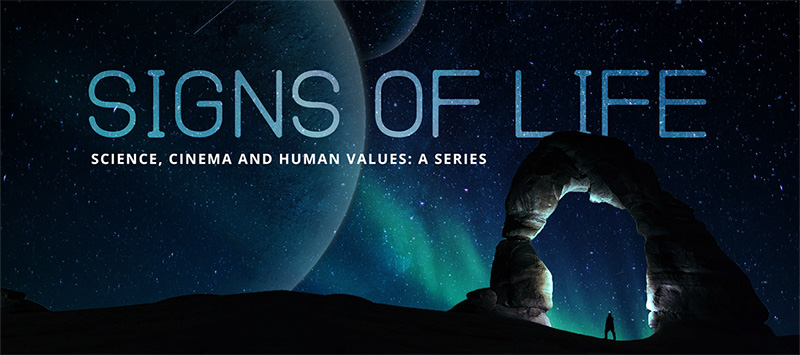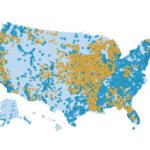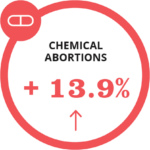Ten Truths about Title X
This is Issue 25 of the On Point Series.
Introduction
Title X was enacted in 1970 as an addition to the Public Health Service Act (the “Act”), becoming the only federal grant program directed solely at providing individuals and families with comprehensive family planning and related reproductive health services. Title X provides ample funding for interested nonprofits. In 2017, the Federal government allocated over $250,000,000 for Title X grants.[1]
Title X provides the Secretary of Health and Human Services wide latitude in interpreting the Act through issuing regulations. While the Act clearly prohibits its funds to be used in programs where abortion is a method of family planning[2], Presidential Administrations have interpreted this requirement in varying ways. During the Reagan Administration, regulations were issued on Title X that were designed to ensure the physical and financial separation of abortion facilities from those receiving Title X grants. The Reagan regulations further barred Title X grantees from engaging in such practices as counseling, referring for, or promoting abortion as a method of family planning. The regulations were upheld by the Supreme Court in 1991 in Rust v. Sullivan (500 U.S. 173).
Under the Clinton Administration, Title X regulations were revised to specify for the first time that Title X recipients must refer for abortion.[3] Recently, the U.S. Department of Health and Human Services (“HHS”) issued new proposed regulations, which, when adopted, will solidify the original, intended bright-line rule of separation of abortion from family planning.[4] Accordingly, many life-affirming organizations are now asking whether they might qualify for Title X funding once the new regulations are adopted. In considering this question, it is important to know several fundamental truths about Title X.
Truth #1: New potential grantees CAN apply for Title X funds
To date, Planned Parenthood, the nation’s largest abortion provider, has used Title X as more or less a slush fund. Planned Parenthood receives $50-60 million a year from the Title X program. Appallingly, such funding has aided Planned Parenthood as it inflated the U.S. abortion rate, controlled more than 35% of the abortion industry, and carried out more than three million “extra” abortions that could have been avoided since 1995.[5] However, the tides of Title X are turning in a more positive direction. As a growing number of pro-life pregnancy help organizations (PHCs) offer reproductive health medical services and apply for Title X funding, Planned Parenthood no longer has the edge on non-profit reproductive health care in the United States.
In 2017, almost 2,000 pro-life pregnancy help centers (PHCs), representing 70% of all PHCs, offered ultrasound services under the direction of a licensed medical professional.[6] They serve hundreds of thousands of women annually. The growing provision of ultrasound services has opened the door to other reproductive health services, including STI testing and treatment, cervical cancer screenings, HIV screenings, and well women’s visits.[7] Such programs are essential for receiving Title X funding. Combined with the robust Sexual Risk Avoidance (SRA) programs which PHCs have long offered,[8] many PHCs are emerging as competitive potential applicants for Title X funding, along with local and state Health Departments, which are often recipients of Title X funds.[9]
Truth #2: Faith-based and pro-life organizations may apply for Title X funding.
To qualify for Title X funding, an applicant must be an IRS-recognized, non-profit organization; however, there is no restriction on the religious or moral views that applicants hold. In fact, in the last Funding Opportunity Announcement (FOA), HHS encouraged applicants to partner with faith-based organizations.[10] Further, the Charitable Choice Act specifies that faith-based organizations cannot be excluded from Federal funding opportunities.[11]
The Charitable Choice Act requires faith-based organizations to separate their religious activities from government-funded activities “in time and location.”[12] Many PHCs have found ways to effectively separate prayer and Gospel presentations from government-funded services, often by using specially trained “spiritual counselors” to provide spiritual services at a separate time and location from the federally funded service.
Likewise, pro-life organizations may apply for Title X funding. The current regulations require referral for abortion; however, HHS allows any applicant with an objection to abortion to apply for an “exemption.” An interested applicant can even contact the HHS Office for Civil Rights to seek guidance on how best to apply for the exemption.[13]
Truth #3: Title X “sub-recipients” may specialize in preconception care other than hormonal contraception
Title X requires a family planning project to offer prescriptions for hormonal contraception. This requirement will never change, absent a thorough revision of the text and purpose of the Act.[14] Because the purpose of Title X is to provide a “broad range” of family planning methods, HHS offers no conscience exemption for this requirement. Nonetheless, organizations objecting to prescribing hormonal contraception may seek to contract with a primary grantee to be a “sub-recipient” of Title X funding. Primary grantees are allowed to contract with sub-recipients who can help the family planning project provide a broad range of family planning and reproductive health services within its larger family of partners. Most primary grantees use sub-recipients for these purposes.[15] Title X funds many other services PHCs provide, including Sexual Risk Avoidance (SRA) education and natural family planning, among others. An organization’s provision of reproductive health services, which many PHCs now provide, is highly valued. In fact, the Office of Population Affairs boasts that Title X allows the early detection and treatment of potentially life-threatening diseases:
In 2017, Title X providers conducted Papanicolaou (Pap) testing on 18% (649,266) of female users. Fourteen percent of the 683,247 Pap tests performed had an indeterminate or abnormal result requiring further evaluation and possible treatment. In addition, providers performed clinical breast exams on 25% (878,491) of female users and referred 5% of those examined for further evaluation based on abnormal findings…Providers also performed…1.2 million confidential HIV tests (3.0 tests per 10 users)…Of the confidential HIV tests performed, 2,195 (1.8 per 1,000 tests performed) were positive for HIV.[16]
Truth #4: Title X does not require prescribing abortifacients
Title X requires the provision of “a broad range of acceptable and effective family planning methods and services (including natural family planning methods, infertility services, and services for adolescents).”[17] This requirement, however, does not mandate prescribing drugs that an organization believes are abortifacients. The Centers for Disease Control and Prevention (CDC) publishes a list of family planning methods that are acceptable under Title X.[18] A grantee may exclude any contraceptive method it believes is an abortifacient, as long as a broad range of family planning methods are provided, including hormonal contraception. Sub-recipients, as noted above, have even wider latitude, particularly if they help a grantee meet its requirement to provide services like sexual risk avoidance and natural family planning that would be otherwise unmet under the grant.
Truth #5: Title X emphasizes protecting children and adolescents
Historically, Title X has emphasized protecting children and adolescents from harm. The latest FOA required recipients to have project-wide monitoring and reporting policies related to “child abuse, child molestation, sexual abuse, rape, incest, intimate partner abuse, and human trafficking.” This requirement includes annual staff training and the preliminary screening of teens with an STD, pregnancy or any suspicion of abuse.[19] Likewise, HHS also encourages “family participation in the decision of minors to seek family planning services” and “counseling to minors on how to resist attempts to coerce [them] into engaging in sexual activities.”[20] This requirement may prove to be problematic to Planned Parenthood in the future as its long history of failing to protect children from sexual abuse continues to be more widely exposed,[21] thereby making PHCs with strong records of protecting children competitive applicants for Title X funds.
Truth #6: Low-income individuals and families rely on Title X funding
The Office of Population Affairs describes the Title X program as “designed to provide contraceptive supplies and information to all who want and need them, with priority given to persons from low-income families.”
The OPA boasts of serving a “socioeconomically disadvantaged population, most of whom are female, low income, and young.”[22]
In 2017, Title X-funded providers served approximately 4.0 million family planning users (i.e., clients) through 6.6 million family planning encounters…About 9 of every 10 users (88%) were female, 65% were under 30 years of age, and 67% had family incomes at or below the poverty level ($24,600 for a family of four in the 48 contiguous states and the District of Columbia).[23]
Indeed, in Fiscal Year 2017, two-thirds (2,665,911 of 4,004,246) of Title X clients had incomes that fell below the poverty line.[24] This HHS priority particularly bodes in favor of PHC applicants which, unlike Planned Parenthood, provide all their services at little or no cost.
Truth #7: Title X provides services to men as well as women
While women constitute the bulk of Title X clients, men are not excluded from Title X funded programs, and constitute a significantly growing client population. As reported by the Office of Population Affairs:
In 2017, 12% (463,011) of all Title X users were men, a number that has grown by 57% since 2007. Most male users were in their 20s (44%) or 30s (22%), and 76% (353,287) adopted or continued use of condoms or another contraceptive method at exit from their last encounter. In addition, Title X providers tested 69% (321,280) of all male users for chlamydia and provided testing for several other STDs, including gonorrhea (7.6 tests per 10 male users), HIV (5.9 tests per 10 male users), and syphilis (3.6 tests per 10 male users).[25]
This is welcome news for PHCs, which continue to expand their services to be more inclusive of men.[26]
Truth #8: Title X requires non-discrimination against clients and emphasizes diversity
Under federal civil rights laws, recipients of Title X monies may not “discriminate on the basis of race, color, national origin, disability, age, and in some cases sex and religion.”[27] Further, the Office of Population Affairs clearly emphasizes its preference for funding programs that reach a diverse racial and ethnic population:
Of the 4.0 million family planning users served in 2017, 31% self-identified with at least one of the nonwhite Office of Management and Budget race categories (black or African American, Asian, Native Hawaiian or Pacific Islander, American Indian or Alaska Native, or more than one race), 33% self-identified as Hispanic or Latino, and 14% were limited English proficient.[28]
PHCs are well-known for their intentional focus on serving a diverse client population, including Native American and Alaskan Native communities. PHCs may often be the only alternative to Planned Parenthood in minority communities,[29] well positioning them to meet the priorities and requirements of the Title X program.
Truth #9: Title X provides a steady stream of funding to recipients
Since its first implementation in 1971, Title X has provided recipients nearly $10 billion in funding ($9,448,946,286).[30] Approximately $3 billion has been distributed in the past 10 years alone ($2,932,447,286 since 2009).[31] With its long history of substantial, stable, and reliable funding, Title X will likely remain well into the future. While the regulations and recipients of Title X funding will often change, the funding stream itself is constant. As more and more pro-life organizations consider applying and expand eligible services, Title X may prove to be a reliable financial resource as services and need expand.
Truth #10: The proposed new Title X regulations support the pro-life viewpoint of Americans regarding public subsidies for abortion.
While not yet adopted, the proposed new regulations, which are designed to reestablish the bright-line rule separating Title X funds from abortion, support the views held by most Americans on public subsidies for abortion.
Currently, the laws of the United States allow legal abortion for all nine months of pregnancy for any reason, including sex selection.[32] This extreme position directly conflicts with the viewpoint of the vast majority of the American people. In fact, the latest polling conducted by Gallup indicates that fewer than one-third of Americans (29%) support legal abortion in all circumstances (the current state of U.S. law), with more than two-thirds (68%) of Americans desiring limitations on abortion in certain or all circumstances.[33]
What is more, six in 10 Americans oppose taxpayer funding of abortion.[34] Money is fungible. Money designated for one purpose (e.g., family planning) necessarily frees up funds for other purposes (e.g., abortion/abortion referrals). As such, organizations that provide abortions or abortion referrals have consistently opposed measures that require them to bifurcate or designate Title X funding in a manner meeting the bright-line separation requirements of the Act. Such organizations have prioritized reliance on abortion as a method of family planning over the provision of Title X-funded services to women seeking assistance with family planning. It logically follows, therefore, that most Americans would prefer their tax monies to fund pro-life organizations and other agencies that offer a matrix of services meeting the requirements of Title X while excluding the abortion industry from access to the funds. The 1970 statute was premised on this idea of eschewing abortion as a method of child spacing.
Jeanneane Maxon is an associate scholar with the Charlotte Lozier Institute.
[1] Fowler, C. I., Gable, J., Wang, J., & Lasater, B. (2018, August). Family Planning Annual Report: 2017 national summary. Research Triangle Park, NC: RTI International, Page ES-1.
[2] 42 U.S.C. 6-A, § 1008 [300a-6]; Office of Population Affairs. (2014). Program requirements for Title X funded family planning projects (Version 1.0) at pg. 12. Available at: https://www.hhs.gov/opa/sites/default/files/ogc-cleared-final-april.pdf (accessed 22 September 2018). (hereinafter “Program requirements”).
[3] https://www.ecfr.gov/cgi-bin/text-idx?SID=c1cbd72e13f7230f1e8328fa52b57899&mc=true&node=sp42.1.59.a&rgn=div6
A project must:
(i) Offer pregnant women the opportunity to be provided information and counseling regarding each of the following options:
(A) Prenatal care and delivery;
(B) Infant care, foster care, or adoption; and
(C) Pregnancy termination.
[4] https://www.regulations.gov/document?D=HHS-OS-2018-0008-0001
[5] Studnicki, J. and Fisher, J.W. (2018) Planned Parenthood: Supply Induced Demand for Abortion in the US. Open Journal of Preventive Medicine, 8, 142-145. https://doi.org/10.4236/ojpm.2018.84014
[6] 1968-2018 A Half Century of Hope, A Legacy of Life and Love. Charlotte Lozier Institute. September 2018. at page 16. Available at: https://lozierinstitute.org/wp-content/uploads/2018/09/A-Half-Century-of-Hope-A-Legacy-of-Life-and-Love-FULL.pdf (Accessed 22 Sept. 2018).
[7] Half Century of Hope at pgs. 18-19.
[8] Half Century of Hope at pg. 20.
[9] Fowler, at pg. 7.
[10] “Funding Opportunity Announcement: Funding Opportunity Number: PA-FPH-18-001,” Office of the Assistant Secretary for Health, Office of Population Affairs, pg. 11, Available at: https://www.grantsolutions.gov/gs/preaward/previewPublicAnnouncement.do?id=61595 (Accessed 22 Sept. 2018). (hereinafter FOA).
[11] 45 CFR 1050.3(a)(1-2).
[12] 45 CFR 1050.3(b).
[13] https://www.hhs.gov/civil-rights/index.html; Toll Free Call Center: 1-800-368-1019
[14] 42 U.S.C. 6-A, § 1008 [300a-6].
[15] For a list of primary grantees and sub-recipients as of July 2018, see https://www.hhs.gov/opa/sites/default/files/Title-X-Family-Planning-Directory-July2018.pdf
[16] Fowler, at pg. ES-2.
[17] 42 U.S.C. 300, § 1001.300(a).
[18]https://www.cdc.gov/reproductivehealth/contraception/unintendedpregnancy/pdf/Contraceptive_methods_508.pdf
[19] FOA at pgs. 8-9
[20] Ibid.
[21] See “Aiding Abusers: Planned Parenthood’s Cover Up of Child Sexual Abuse.” Live Action. May 2018. Available at: https://www.liveaction.org/wp-content/uploads/2018/05/Planned%20Parenthood%20Sexual%20Abuse%20Report%202018.pdf (accessed: 23 Sept. 2018).
[22] Fowler at pg. ES-1
[23] Fowler at pgs. ES-1, ES-2
[24] Fowler, Exhibit 15 at pg. 23
[25] Fowler, at pg. ES-3.
[26] Half Century of Hope at pg. 35.
[27] FOA, at pg. 70.
[28] Fowler, at pg. ES-2.
[29] Half Century of Hope at pgs. 51-53.
[30] https://www.hhs.gov/opa/title-x-family-planning/about-title-x-grants/funding-history/index.html
[31] Ibid.
[32] Roe v. Wade, 410 U.S. 113 (1973); Doe v. Bolton, 410 U.S. 179 (1973).
[33] “Abortion.” Gallup. 2018 May 1-10. Web. Available at: https://news.gallup.com/poll/1576/abortion.aspx (accessed 12 June 2018).
[34] “Americans’ Opinions on Abortion” Marist Poll, Knights of Columbus. January 2018. Web. Available at: https://www.kofc.org/un/en/resources/communications/abortion-limits-favored.pdf (accessed 12 June 2018).























